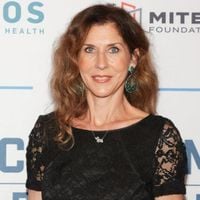Monica Seles, the legendary tennis star who once stood atop the women’s world rankings for 178 weeks, has stepped back into the spotlight—not for a comeback on the court, but to share a deeply personal health battle. On August 13, 2025, Seles, now 51 and a nine-time Grand Slam singles champion, revealed that she was diagnosed with myasthenia gravis, a rare and incurable neuromuscular autoimmune disease, three years ago. Her decision to go public is timed with the approach of this month’s US Open, a tournament she once dominated and that still captures the imagination of tennis fans worldwide.
For Seles, the journey to diagnosis began about five years ago. She first noticed something was off when she started having trouble with simple tennis rallies—missing balls while playing casually with children or family members. “I would be playing with some kids or family members, and I would miss a ball,” Seles told the Associated Press. “I was like, ‘Yeah, I see two balls.’ These are obviously symptoms that you can’t ignore. And, for me, this is when this journey started.”
As the symptoms progressed, Seles began experiencing more than just double vision. Weakness crept into her legs and arms, making everyday tasks—like blowing her hair out—unexpectedly difficult. “It took me quite some time to really absorb it, speak openly about it, because it’s a difficult one,” she explained. “It affects my day-to-day life quite a lot.”
Myasthenia gravis, as described by the Mayo Clinic and echoed by Seles, causes muscle weakness and double vision. The disease is rare, and for many—including Seles herself at the time of her diagnosis—unknown. “When I got diagnosed, I was like, ‘What?!’” Seles recalled, adding that she had never heard of the disease before. “So this is where, I can’t emphasize enough, I wish I had somebody like me speak up about it.”
Now, Seles is determined to be the voice she wished she had heard. Her announcement comes as the tennis world gears up for the US Open, set to begin on August 24 at New York’s Billie Jean King National Tennis Center. By sharing her story, Seles hopes to bring greater awareness to myasthenia gravis, using her platform to educate and inspire. “One thing, as I tell kids that I mentor: ‘You’ve got to always adjust. That ball is bouncing, and you’ve just got to adjust,’” she said. “And that’s what I’m doing now.”
Seles’ career is one of the most remarkable in tennis history. She burst onto the scene at just 16, winning her first Grand Slam at the 1990 French Open. By the age of 19, she had already collected eight major titles, a feat few have matched. But her trajectory was tragically interrupted in 1993 when she was stabbed by a fan during a match in Hamburg, an incident that shook the sports world to its core. Though she eventually returned to the court, the attack and its aftermath undeniably altered the course of her career. Seles would go on to win one more major title before playing her final professional match in 2003, ultimately amassing 53 tournament victories and cementing her legacy as one of the game’s greats.
Her 178 weeks as world number one remain a benchmark in the sport—only five players have spent more time at the top. Seles’ aggressive baseline play, two-handed strokes on both sides, and indomitable spirit made her a fan favorite and a formidable opponent. But off the court, her resilience has been equally inspiring. After retiring officially in 2008, Seles has dedicated much of her time to mentoring young athletes and advocating for mental health awareness, drawing from her own experiences of overcoming adversity.
The revelation of her battle with myasthenia gravis adds another chapter to her story of perseverance. The disease, while not curable, is manageable with medication and lifestyle adjustments. Still, it presents ongoing challenges—especially for someone whose life was once defined by physical prowess. Seles’ willingness to discuss the reality of her condition, including the moments of vulnerability and frustration, is both brave and necessary. “It’s a difficult one. It affects my day-to-day life quite a lot,” she admitted, underscoring how even routine activities can become hurdles.
Her openness also comes at a time when other public figures have begun sharing their own health struggles, helping to destigmatize medical conditions that are often misunderstood or overlooked. Seles’ story is a reminder that athletes, no matter how strong or successful, are not immune to health challenges. By speaking out, she hopes to encourage others facing similar battles to seek help and not feel isolated.
As the US Open approaches, Seles’ message resonates beyond the boundaries of the tennis court. She wants aspiring athletes—and anyone facing personal adversity—to remember the importance of adaptability. “You’ve got to always adjust,” she tells the kids she mentors. It’s advice rooted in the very fabric of sport, where the unexpected is always just a point away, but it applies equally to life’s broader challenges.
For tennis fans, Seles’ legacy is secure, but her willingness to share her health journey adds a new dimension to her story. She is no longer just the fierce competitor who dominated the Grand Slams in the early 1990s; she is also a voice for those grappling with invisible illnesses, a role model for resilience, and a champion of awareness and education.
With the spotlight once again on New York for the US Open, Monica Seles’ story serves as a powerful reminder that the battles athletes fight off the court can be just as significant as those waged under the bright lights of center court. By choosing to speak up now, she’s ensuring that her influence extends far beyond her playing days—offering hope, inspiration, and practical advice to anyone navigating the unpredictable bounces of life.
As the tennis world turns its attention to the Billie Jean King National Tennis Center, Seles’ courage in sharing her diagnosis stands as a rallying cry for awareness and adaptability. The journey continues, both for Seles and for those she hopes to inspire, proving once again that true champions rise to every challenge—on and off the court.



